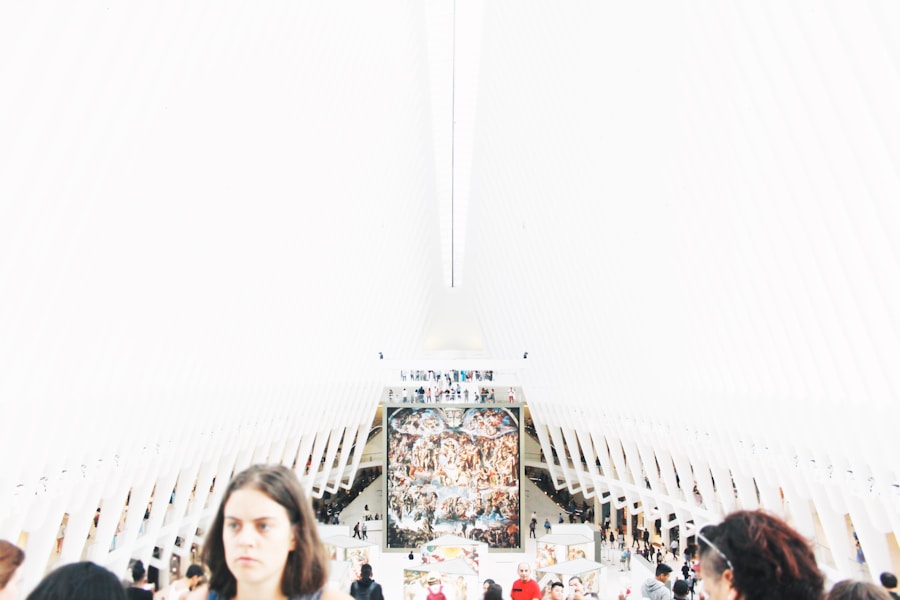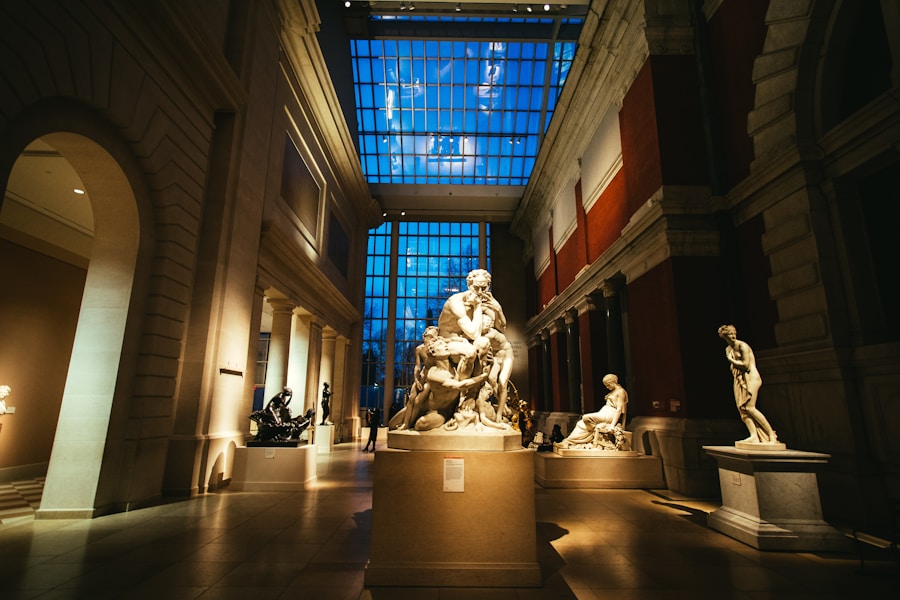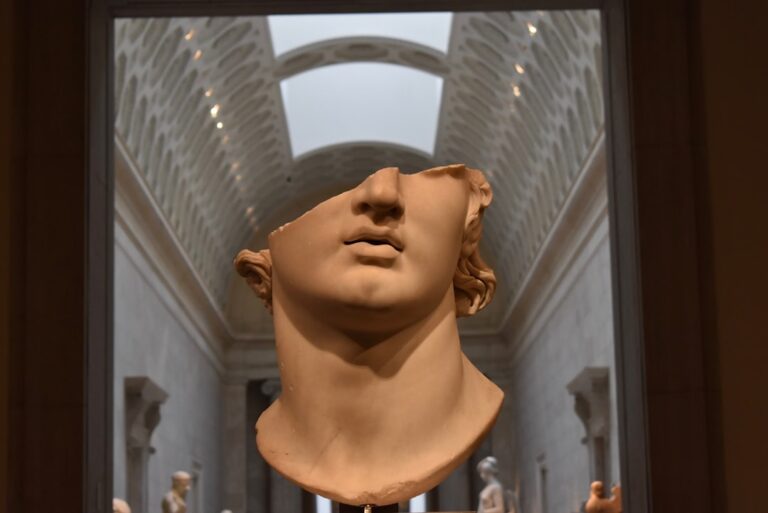Organizational structures in museums play a pivotal role in determining how these institutions operate, manage resources, and engage with their communities. Museums, as cultural repositories, are tasked with preserving artifacts, educating the public, and fostering appreciation for art, history, and science. The complexity of these responsibilities necessitates a well-defined organizational structure that can adapt to the unique challenges faced by each institution.
Understanding the various types of organizational structures is essential for museum professionals, as it influences decision-making processes, communication flows, and ultimately, the effectiveness of the museum in fulfilling its mission. The choice of an organizational structure can significantly impact a museum’s ability to respond to changes in funding, audience engagement, and technological advancements. For instance, a museum that adopts a rigid hierarchical structure may struggle to innovate or respond quickly to community needs, while one that embraces a more flexible network or team-based approach may find itself better equipped to adapt to the evolving landscape of cultural institutions.
This article will explore several common organizational structures found in museums, including hierarchical, matrix, network, and team-based models, providing insights into their advantages and disadvantages.
Key Takeaways
- Organizational structures in museums help define the hierarchy and relationships within the institution.
- Hierarchical organizational structure is a traditional top-down approach with clear lines of authority and communication.
- Matrix organizational structure combines functional and project-based structures, allowing for flexibility and specialization.
- Network organizational structure emphasizes collaboration and partnerships with external organizations and stakeholders.
- Team-based organizational structure focuses on cross-functional teams working together to achieve common goals.
- When choosing the right organizational structure for a museum, consider the institution’s size, goals, and culture to determine the most effective approach.
Hierarchical Organizational Structure
The hierarchical organizational structure is one of the most traditional and widely recognized frameworks in museums. This model is characterized by a clear chain of command, where authority and responsibilities are distributed across various levels of management. Typically, at the top of the hierarchy is the museum director or chief executive officer, followed by senior management positions such as curators, department heads, and administrative staff.
Each level of the hierarchy has defined roles and responsibilities, which can facilitate clear communication and decision-making processes. One of the primary advantages of a hierarchical structure is its clarity. Employees understand their roles within the organization and who they report to, which can lead to increased accountability.
For example, in a large art museum, the curator of contemporary art may report directly to the director of curatorial affairs, ensuring that decisions regarding exhibitions and acquisitions align with the museum’s overall vision. However, this structure can also lead to challenges such as bureaucratic delays and a lack of flexibility. In situations where rapid decision-making is required—such as responding to a sudden opportunity for a traveling exhibition—hierarchical structures may hinder responsiveness due to the need for approvals at multiple levels.
Moreover, hierarchical structures can create silos within departments, limiting collaboration and communication across different areas of expertise. For instance, if the education department operates independently from the curatorial team, there may be missed opportunities for interdisciplinary programming that could enhance visitor engagement. While hierarchical structures can provide stability and order, museums must be mindful of fostering interdepartmental collaboration to ensure that they remain dynamic and responsive to their audiences.
Matrix Organizational Structure

The matrix organizational structure represents a more complex approach to managing resources and personnel within museums. In this model, employees report to multiple managers or leaders based on specific projects or initiatives rather than adhering strictly to a single chain of command. This dual-reporting system allows for greater flexibility and encourages collaboration across different departments.
For example, a museum might form a project team consisting of curators, educators, marketing specialists, and conservators to develop a new exhibition on ancient civilizations. One significant advantage of the matrix structure is its ability to leverage diverse expertise from various departments. By bringing together individuals with different skill sets and perspectives, museums can create more innovative programming and exhibitions that resonate with a broader audience.
For instance, when planning an interactive exhibit on local history, input from both curatorial staff and educators can ensure that the content is not only accurate but also engaging for visitors of all ages. However, the matrix structure is not without its challenges. The dual-reporting system can lead to confusion regarding authority and accountability.
Employees may find themselves torn between competing priorities from different managers, which can create stress and hinder productivity.
Museums considering this structure must invest in training and development to equip staff with the skills needed to navigate this complexity effectively.
Network Organizational Structure
The network organizational structure is increasingly relevant in today’s interconnected world, particularly for museums seeking to expand their reach and impact through partnerships and collaborations. In this model, museums operate as part of a broader network that includes other cultural institutions, community organizations, educational entities, and even private sector partners. This approach allows museums to share resources, knowledge, and expertise while enhancing their ability to serve diverse audiences.
One of the primary benefits of a network structure is its emphasis on collaboration and resource sharing. For example, a small regional museum might partner with larger institutions to co-host exhibitions or educational programs that would be too resource-intensive to undertake independently. This not only broadens the scope of programming but also fosters community engagement by bringing together different audiences.
Additionally, through networking with other organizations, museums can access funding opportunities that may not be available to them as standalone entities. However, operating within a network structure requires strong relationship-building skills and effective communication strategies. Museums must navigate varying organizational cultures and priorities while ensuring that all partners are aligned toward common goals.
Trust becomes a critical component; without it, collaborations may falter or lead to misunderstandings. Furthermore, museums must be prepared for the complexities of shared decision-making processes that come with collaborative initiatives. While the network structure offers significant advantages in terms of resource optimization and audience engagement, it demands careful management to ensure that partnerships are mutually beneficial.
Team-Based Organizational Structure
The team-based organizational structure represents a shift away from traditional hierarchies toward a more collaborative approach where cross-functional teams are formed to address specific projects or challenges within the museum. In this model, employees from various departments come together to work on initiatives such as exhibitions, educational programs, or community outreach efforts. This structure promotes agility and responsiveness by allowing teams to adapt quickly to changing circumstances or audience needs.
One notable advantage of team-based structures is their potential for fostering innovation. When individuals from diverse backgrounds collaborate on projects, they bring unique perspectives that can lead to creative solutions and fresh ideas. For instance, when developing an exhibition on environmental sustainability, a team comprising curators, educators, marketing professionals, and conservationists can create an engaging experience that not only informs visitors but also inspires action within the community.
With multiple individuals contributing to a project without a clear hierarchy, it can be difficult to establish ownership over tasks or ensure that deadlines are met. Effective leadership becomes crucial in guiding teams toward their objectives while maintaining open lines of communication.
Additionally, museums must cultivate a culture that values collaboration and recognizes individual contributions within team settings. Balancing autonomy with accountability is essential for maximizing the benefits of this organizational model.
Choosing the Right Organizational Structure for Your Museum

Selecting the appropriate organizational structure for a museum is not a one-size-fits-all endeavor; it requires careful consideration of various factors including size, mission, audience demographics, and available resources. Each structure—whether hierarchical, matrix-based, networked, or team-oriented—offers distinct advantages and challenges that must be weighed against the specific goals of the institution. Ultimately, the right organizational structure should align with the museum’s vision while fostering an environment conducive to innovation and collaboration.
As museums continue to evolve in response to societal changes and technological advancements, they must remain flexible in their approach to organizational design. By understanding the nuances of different structures and their implications for operations and audience engagement, museum professionals can make informed decisions that enhance their institution’s effectiveness in serving its community.
In a recent article on sociological perspectives, the author delves into the various theories and frameworks that can be applied to understanding the dynamics of organizational structures in museums. By examining the social interactions, power dynamics, and cultural influences within museums, sociological perspectives offer valuable insights into how these institutions are organized and function. This article provides a comprehensive overview of the key concepts and theories that can help museum professionals better navigate and optimize their organizational structures.
FAQs
What are the different types of organizational structures in museums?
There are several types of organizational structures in museums, including hierarchical structures, matrix structures, and flat structures. Hierarchical structures have a clear chain of command, with decision-making authority flowing from the top down. Matrix structures involve employees reporting to multiple managers or departments. Flat structures have fewer levels of management and a more decentralized decision-making process.
What are the advantages of hierarchical organizational structures in museums?
Hierarchical organizational structures in museums can provide clear lines of authority, efficient decision-making, and a well-defined chain of command. This can help ensure that tasks are completed in a timely manner and that there is accountability for performance.
What are the disadvantages of hierarchical organizational structures in museums?
Disadvantages of hierarchical organizational structures in museums can include limited flexibility, slower communication, and potential for a lack of innovation. Additionally, employees may feel less empowered to make decisions and contribute to the overall success of the museum.
What are the advantages of flat organizational structures in museums?
Flat organizational structures in museums can promote a more collaborative and inclusive work environment, with greater opportunities for employee input and decision-making. This can lead to increased innovation, creativity, and employee satisfaction.
What are the disadvantages of flat organizational structures in museums?
Disadvantages of flat organizational structures in museums can include potential for confusion over roles and responsibilities, as well as challenges in maintaining clear lines of authority and decision-making. Without a clear hierarchy, there may be difficulties in managing and coordinating tasks and projects.
How do museums determine the most suitable organizational structure?
Museums determine the most suitable organizational structure based on their mission, goals, size, and complexity. They may also consider factors such as the need for flexibility, innovation, and employee empowerment. Additionally, museums may assess their current and future needs to determine the best fit for their organizational structure.






















+ There are no comments
Add yours